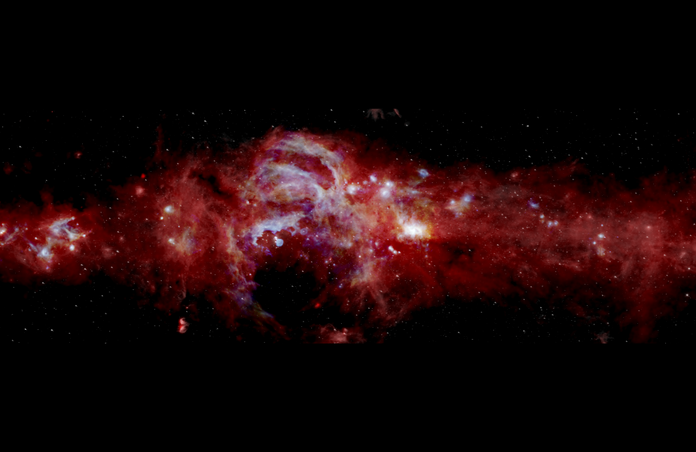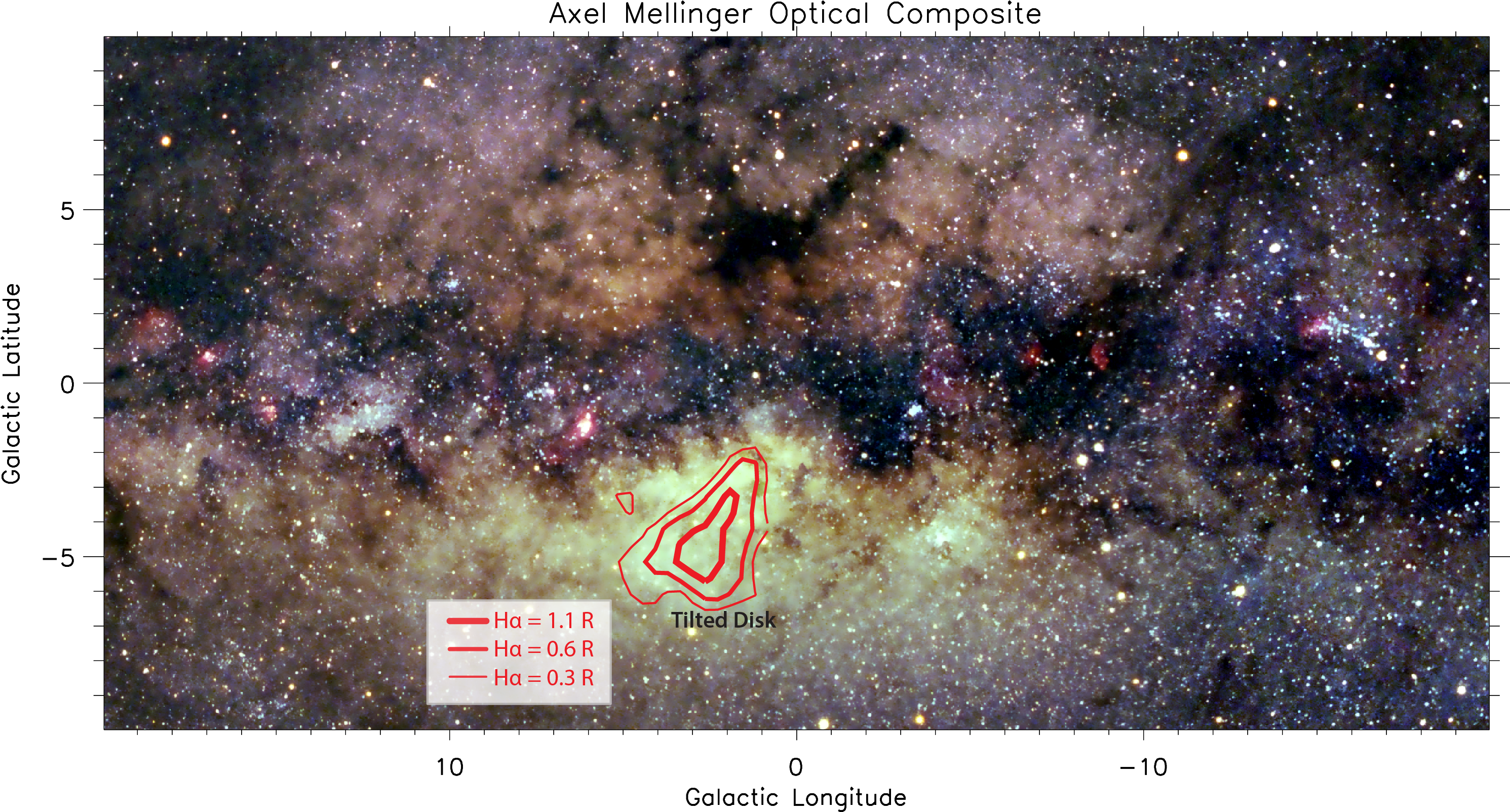WHAM Data Reveals New Clues About Our Galaxy’s Center

Using two decades of data collected by the Wisconsin H-Alpha Mapper telescope (WHAM), astronomers now finally have a better idea of what the Milky Way's center looks like.
Astronomers have already observed and studied dozens of spiral galaxies in the universe, from their centers out, but trying to view the center of our own galaxy is harder. The Milky Way's center is veiled by a massive cloud of dust and gas, which has kept astronomers from fully observing its composition—at least until now. After combing through 20 years of WHAM data and stumbling upon a strangely shaped hydrogen bubble, a team of astronomers has uncovered more clues about our galaxy's core.
The Research
Research into our galaxy's mysterious center was sparked by Bob Benjamin's discovery of a peculiarly shaped ionized hydrogen bubble. Benjamin, the professor of Astronomy at UW-Whitewater, was studying WHAM data when he spotted the bubble (which he called a "red flag"). The bubble he discovered, known as a Tilted Disk, had such an odd shape it couldn’t have been formed from any typical process, such as the rotation of a galaxy. He also found that it was moving in the direction of Earth, which offered a rare opportunity—the Titled Disk could now be viewed in optical light, rather than just infrared or radio light.

After his discovery, Benjamin teamed up with two other astronomers to further study the Milky Way’s center using the massive library of WHAM data. They started by comparing the observations of our own center with those of other spiral galaxies. L. Matthew Haffner of Embry-Riddle Aeronautical University, a co-author of the study, states that “Being able to make these measurements in optical light allowed us to compare the nucleus of the Milky Way to other galaxies much more easily. Many past studies have measured the quantity and quality of ionized gas from the centers of thousands of spiral galaxies throughout the universe. For the first time, we were able to directly compare measurements from our Galaxy to that large population.”
Unlocking the Center’s Mysteries
The team’s research, which was announced via press release and is published in the journal Science Advances, will offer insight into how LINER-type galaxies, like the Milky Way, function. Haffner states, "Before this discovery by WHAM, the Andromeda Galaxy was the closest LINER spiral to us. But it's still millions of light-years away. With the nucleus of the Milky Way only tens of thousands of light-years away, we can now study a LINER region in more detail. Studying this extended ionized gas should help us learn more about the current and past environment in the center of our Galaxy." Haffner and his colleague Edwin Mierkiewicz, an associate professor of physics at Embry-Riddle, have plans to continue studying the center with WHAM, and one day hope to build a worthy successor capable of offering an even sharper view.